Reynolds Family History & Genealogy
Reynolds Last Name History & Origin
AddHistory
We don't have any information on the history of the Reynolds name. Have information to share?
Name Origin
We don't have any information on the origins of the Reynolds name. Have information to share?
Spellings & Pronunciations
We don't have any alternate spellings or pronunciation information on the Reynolds name. Have information to share?
Nationality & Ethnicity
We don't have any information on the nationality / ethnicity of the Reynolds name. Have information to share?
Famous People named Reynolds
Are there famous people from the Reynolds family? Share their story.
Early Reynoldses
These are the earliest records we have of the Reynolds family.



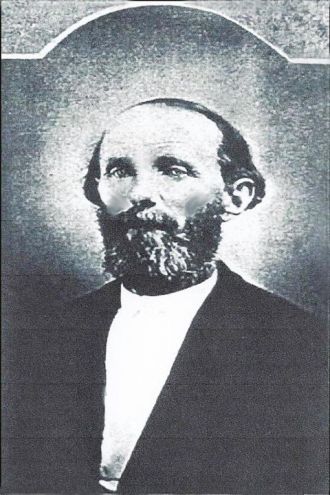
Reynolds Family Members
Reynolds Family Photos
Discover Reynolds family photos shared by the community. These photos contain people and places related to the Reynolds last name.

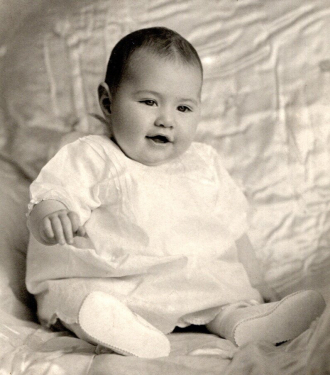
Marilyn Lee JENSEN was b. 9 Sept 1933 in Jewell, IA the daughter of Hans Juhl JENSEN (1909-1997) and Cora or Cara Marie HELVIG (1905-2008). Marilyn had only one sibling, a sister. Marilyn married Duane Rexford REYNOLDS (1931-1992) on 14 June 1953 in Jewell, IA. Marilyn died 7 Jan 2021 in Atlantic, IA and she is buried in the Atlantic Cemetery in that city. Marilyn’s obituary lists her surviving children including Randy REYNOLDS of Council Bluffs, IA; Diana ROZMIAREK of LaVista, NE; and Jeffery “Jeff” REYNOLDS Waterloo, NE; and her sister Cathy JENSEN of Ankeny, IA.
I’d like to get the photograph to family and would appreciate you contacting me if you are a member of this family or know someone who might be.
Thanks,
Shelley
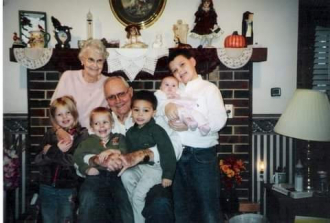
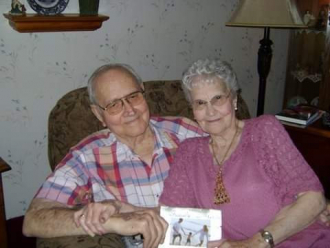


1895 Curtis and Anna (Reynolds) Mentzer - Sanger Relatives
Reynolds Family Tree
Discover the most common names, oldest records and life expectancy of people with the last name Reynolds.
Updated Reynolds Biographies


Popular Reynolds Biographies

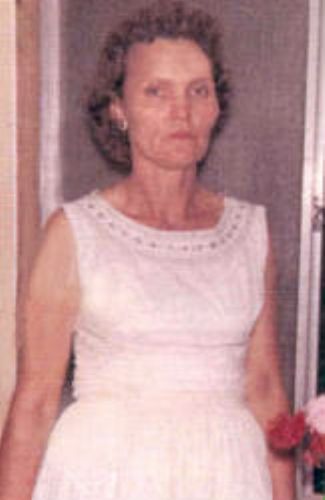



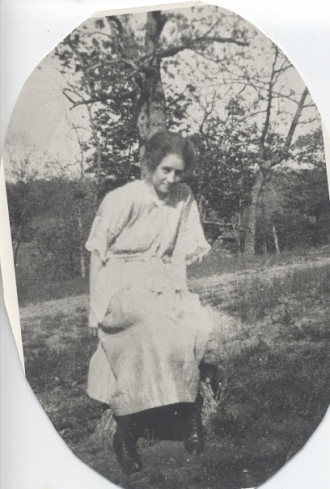







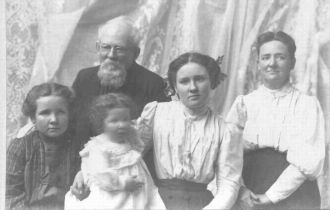







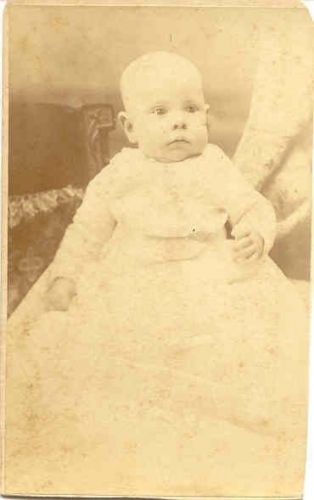

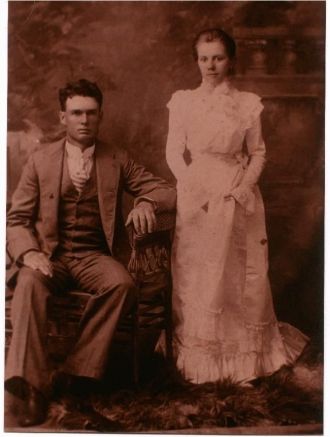

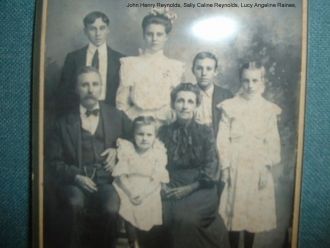
Reynolds Death Records & Life Expectancy
The average age of a Reynolds family member is 72.0 years old according to our database of 74,633 people with the last name Reynolds that have a birth and death date listed.
Life Expectancy
Oldest Reynoldses
These are the longest-lived members of the Reynolds family on AncientFaces.
Other Reynolds Records
Share memories about your Reynolds family
Leave comments and ask questions related to the Reynolds family.
Remnants of an L-shaped log house, with a huge cellar, a stone fireplace and an assortment of fragments of 18th- and 19th-century pottery from China and England, as well as French gunflints and Spanish coins from the 1790s, were unearthed during an Army Corps of Engineers-mandated archaeological survey now nearing completion. The tract on which the home was found will be a fill site for the new replacement lock, scheduled for completion in 2002.
The structure is believed to have once been the home of John Reynolds, a pioneer in the Valley's salt-making industry and a five-term Virginia assemblyman from Kanawha County. Reynolds' son Franklin could also have been the primary occupant of the home, according to archaeologists.
Kanawha County deed books show the Dupont City area land on which the home was built was sold to John Reynolds in 1818 by John Morris. Morris may have been the initial occupant of the home. The land was once part of a large tract owned by George Washington and Gen. Andrew Lewis.
~~~~~~~~~~~~~~~~~~~~~~~~~~~~~~~~~~~~~~~~~~~~~~~
Nearly 200-year-old mansion, graves found near Dupont City
After unearthing the remnants of a slaves cabin late last year, archaeologists working in the construction zone for the new Marmet Locks have found the remains of salt baron and Virginia assemblyman John Reynolds' mansion. "It's 40 feet long and 32 feet wide and probably two stories tall, with fireplaces at each end," said William D. Updike, archaeologist for Cultural Resource Analysts Inc. of Teays Valley, as he stood beside one foundation wall. "We think it was probably built around 1811, not long after Reynolds bought this property." The Reynolds home, described in a newspaper account from the 1880s as a "white frame mansion," fronts the Kanawha River near the mouth of Burning Springs Branch on the western outskirts of Dupont City. Updike believes the home was built in the Federalist style, and was probably similar in appearance to the restored Dickinson home along the Kanawha in nearby Malden, the residence of another pioneer salt manufacturing family.
The remnants of outbuildings, built in neat alignment with the mansion's walls, are also evident following weeks of excavation by a 20-person crew, working under contract to the Army Corps of Engineers. "Here, along the back wall, where we found a lot of bricks standing on end when we started, we found what turned out to be a root cellar," said Updike, peering into a brick-lined pit. Many nails found at the site showed signs of having been exposed to fire, prompting archaeologists to speculate that the home eventually burned. "Since the most recent artifact we found in the house was a 1907 penny, we think it probably happened sometime around 1910," Updike said.
A short distance away lie the remnants of a beehive-shaped bread oven, built away from the house to reduce heat and fire risk in the living quarters. A stone-lined privy pit has also been uncovered, along with a huge rainwater cistern, a barn or stable building and a second root cellar. Artifacts found at the site include numerous pieces of whiteware associated with higher-income households, salt-glazed stoneware, pocketknives, marbles, and a smoking pipe with the initials "FR" printed on its side. "It may have belonged to either Fenton Reynolds or Franklin Reynolds," Updike said. Among pottery fragments found at the site are hand-painted creamware, manufactured between 1765 and 1820, pearlware from the 1780-1830 era, and redware, which was made between 1780 and 1840. Most of the pottery is English-made, although there were some fragments of 1800-vintage Chinese-made porcelain, plus lots of utilitarian crockery for food storage. Luxury items found at the site include several items of jewelry, including a silver ring, a brooch, bracelet, medallion and several beads. Four silver Spanish coins bearing the likeness of King Carlos IV and dating back to the 1790s were also found in the house. One of the coins was cut in half, which is the way they made change back then," said Updike. Another coin was pierced, apparently so it could be worn as jewelry. "That one suggests an African-American presence," Updike said, since slaves, who provided most of the labor for early Kanawha Valley salt works, were known to wear similarly pierced coins as jewelry or charms. "The people who lived here had Spanish coins, bowls from Straffordshire, porcelain from China, French and English gunflints. Even though they lived on the frontier, they had access to the world," said Updike. The remains of two salt furnaces have been found across Burning Springs Branch from the home site.
John Reynolds, a major in the Virginia militia who represented Kanawha County in the Virginia Assembly from 1806 to 1810, was a member of the Kanawha Valley's salt cartel. But he entered the business just as it started to enter a decline, as the nation's meat-packing trade shifted from Cincinnati to Chicago.
"There were 32 salt furnaces operating here prior to 1812," said Army Corps of Engineers archaeologist Bob Maslowski, "but by the 1880s, there were only two. It became much cheaper for the Chicago meat packers to use salt from Michigan than to bring it all the way from West Virginia."
"He had money problems, but he at least kept up the appearances of wealth," pdike said.
Reynolds died in 1833, and the Burning Springs property remained in his family's hands for another 14 years before bankers foreclosed on the tract. The salt maker's wife, Miriam, is believed to have continued to live on the property until the 1850s.
Behind the home, on a knoll overlooking a bend of Burning Springs Branch, members of the archaeological team have located 19 graves, including those of Reynolds, his sons, Van Bibber and Fenton Mercer Reynolds, Van Bibber's wife, Elizabeth, and a grandson, James. The grave of Reynolds' wife has not yet been found. The remains found in the plot will be reinterred at Montgomery Memorial Gardens. "All of the graves were oriented east to west, with the heads to the west," said Alex Bybee, a physical anthropologist for Cultural Resource Analysts. Several gravesites contained coffins that were hexagonal, which dates them earlier than the 1860s. Two of the rectangular, late 19th century coffins were equipped with oval glass viewing plates.
The land on which the Reynolds home was located was used as a vegetable garden until early this year, when the government acquired the property.
It turns out it was a garden spot long before the Reynolds clan occupied the site.
When archaeologists began to excavate mansion grounds, they were surprised to find a series of postholes and hearths that indicated the presence of a fortified Native American village of the early Fort Ancient culture.
"It probably dates back to about 1300 or so," said Maslowski. "They grew corn, beans and squash here, besides fishing and hunting for deer and turkey. The corn cobs found here have been tiny," he said, extending his thumb and forefinger the length of a gum packet.
Attention will shift to the Native American village once work concludes on the Reynolds house in a few weeks.
An exhibit of artifacts found at the mansion, in the slaves' home and in the Indian village will be displayed in the visitor center for the new lock complex, scheduled to open in 2006.
~~~~~~~~~~~~~~~~~~~~~~~~~~~~~~~~~~~~~~~~~~~~~~~~
Isaac VanBibber and Hester Op den Graeff
Jacob Isaacs VanBibber and Christina
Isaac Jacobs Vanbibber and Frances Schumacher
Peter VanBibber and Anna __________
John VanBibber and Chloe Staniford
"Miriam VanBibber and John Reynolds"
~~~~~~~~~~~~~~~~~~~~~~~~~~~~~~~~~~~~~~~~~~~~~~~~
THE JOHN REYNOLDS HOMPLACE AND GRAVEYARD EXCAVATION UPDATE:
To date we have located 9 graves in the Reynolds Cemetery. We have headstones for five individuals:
Van Bibber Reynolds (b.28 Dec d. 18 Dec 1843)
Elizabeth B. Reynolds (b.18 Oct 1802 d. Sept 1838)
James Reynolds (Son of Van Bibber died Mar 3, 1852)
Fenton Reynolds (Son of John Reynolds)
John Reynolds (b.15 Nov 1758 d. Feb 29, 1832)
Most of the headstones were moved but we may be able to match up the headstones for Fenton and James Reynolds. There may also be the wife and daughter of John Morris in the cemetery. Bone preservation is poor so it will be difficult to determine sex and age in many instances. The headstone for Fenton Reynolds was buried under the roots of a big tree and was found only a few days ago so there is the possibility of finding more headstones. I haven't given up looking for the Miriam Van Bibber headstone. There are also later graves post civil war since one unmarked burial had a glass viewing plate and porcelain false teeth.
Unfortunately, the bottom of the Fenton grave stone is broken off and we don't have his date of birth and death.
Source: U.S. Army Corps of Engineers;
~~~~~~~~~~~~~~~~~~~~~~~~~~~~~~~~~~~~~~~~~~~~~~~
Prehistoric Archeology
Only two sites in the project areas produced Paleo Indian artifacts (10,500 BC). The base of a Clovis point associated with mound fill was recovered from the Kirk Mound, a plowed down mound excavated as part of the RC Byrd Project (Niquette et al. 1988). Two Late Paleo points (9000 BC) were recovered from the basal layers of the Van Bibber Reynolds site at Marmet.
The most significant Early Archaic component was a bifurcated base component (6000 BC) excavated at the Van Bibber Reynolds Site at Marmet.
While Late Archaic components (3000 – 1000 BC) were found throughout the project areas the most significant find was the buried Late Archaic component at the Burning Spring Branch Site (46KA142). This site contained significant information on the transition from imported steatite bowls to locally made sandstone bowls and finally Early Woodland pottery and is an example of Late Archaic technology transfer. Steatite is not found in the local area. The closest sources are in Virginia. A few steatite bowls have been found at the Burning Spring Branch site and other sites along the Kanawha River. These were rapidly replaced by bowls made of local sandstone. The general shapes and sizes of the bowls are identical to the shapes and sizes of steatite bowls from Virginia.
The Marmet project had some of the most significant historic sites excavated in West Virginia. The Burning Spring Branch area, originally owned by George Washington, was in the center of the Kanawha Valley Salt Industry. Four early salt furnaces (Updike 2001), a slave cabin, the John Reynolds Mansion and associated out buildings and two historic cemeteries were excavated as part of the Marmet Project (Updike 1999). The first salt furnace in the Kanawha Valley (often referred to today as Chemical Valley) was built in 1797. During the early 1800s the Kanawha Valley had over 50 salt furnaces and was the center of salt production in the United States. It developed the first cartel to control salt production and prices and developed the technology that was later used in the oil, gas, coal and chemical industries (Updike 2003a).
The John Reynolds mansion was located near the mouth of Burning Spring Branch on the Burning Spring Branch Site (46KA142) approximately one hundred yards from an early salt furnace. The house was described in an early newspaper article as a “white frame mansion”. Features documented at the site included a sandstone foundation with interior root cellar, an exterior root cellar, a stone-lined privy, a second later privy, a barn, a well or cistern and a chimney base suggesting the presence of a second house (Updike 2003b).
Bioanthropology
Two historic cemeteries were excavated as part of the Marmet project. The Burning Spring Branch Cemetery was a small, rural cemetery likely containing interments associated with John Morris, a Euro-American pioneer who purchased the tract in 1795 and reserved cemetery rights upon its sale in 1818. The spatial organization was characteristic of an upland south folk cemetery, and burials were aligned in rows or clusters suggestive of a single, possibly extended, family. The lack of ostentation in the cemetery epitomizes the early American view of death (Bybee 2002). Although preservation was generally poor, human remains were recovered from eight of the nine interments. An articulated skull and other intact and fragmentary skeletal remains provided general biological data, while human hair samples provided information on racial affinity. Dental elements offered a variety of information regarding health and age-at-death for the interred population.
The Reynolds cemetery (46KA349) dated from 1832 to 1900. It had 31 burials which included John Reynolds and possibly nine other Reynolds family members (Bybee 2001). The transition from hexagonal coffins to rectangular caskets after the Civil War is documented. This reflects the changing attitudes toward death. Greater emphasis and romanticism was placed on death as a natural design, linking the deceased with the universe. This “beautification of death” as it came to be known also meant a prolonged period of mourning and more elaborate coffins and gravestones.
At Marmet the relocation of the Reynolds Cemetery was coordinated with related families who were located through the internet. Information about the excavations was distributed through the Van Bibber Family Geneological Newsletter and as additional genealogical information was discovered it was made available to the related families.
~~~~~~~~~~~~~~~~~~~~~~~~~~~~~~~~~~~~~~~~~~~~~~~~
In addition to manufacturing salt, John Reynolds represented Kanawha County in the Virginia Assembly from 1806 to 1810. According to an article in the Jan. 24, 1884, Greenbrier Independent, Reynolds, in running for one of his final terms, agreed to take part in a debate with several rival candidates. He wasted few words. So much time has been occupied by my worthy friends who have already addressed you that I will only detain you a moment," he was quoted as saying. "You all know my political principles and my opinions concerning public affairs. If you choose to elect me, I will serve you to the best of my abilities; if you don't, you may go to hell." He was reportedly elected by a large majority. While Reynolds apparently prospered for a time, he died penniless after speculating unsuccessfully in the salt industry, according to Updike.
Followers & Sources








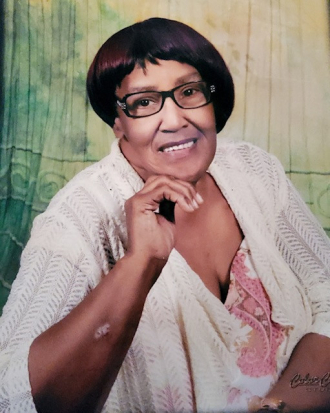









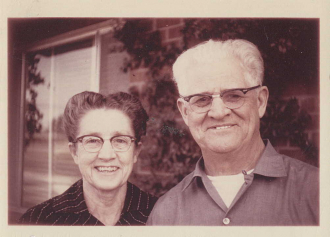
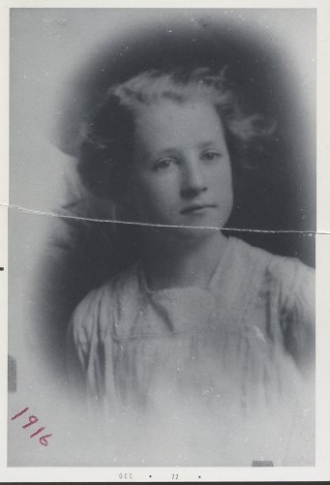

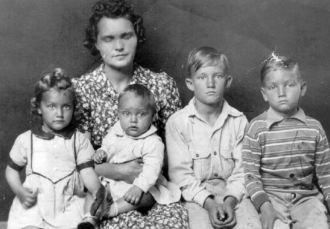

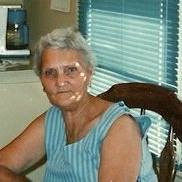
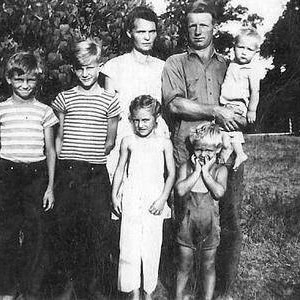
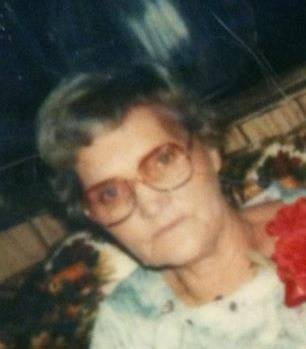

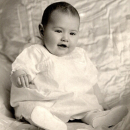





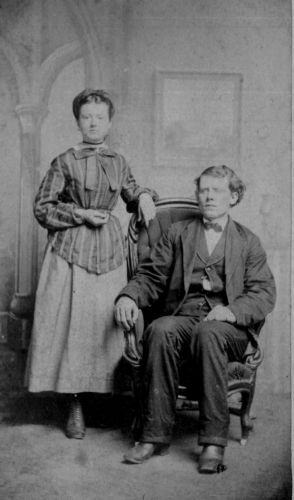
I never met my father or any of his family members. His name is Donald Franklin Reynolds born March 14, 1932 and died October 8,1984 and is buried at the National Memorial Cemetery of Arizona in Maricopa. I believe he lived in Scottsdale Arizona...If anyone has any information that could help me find my family please contact me at [contact link]